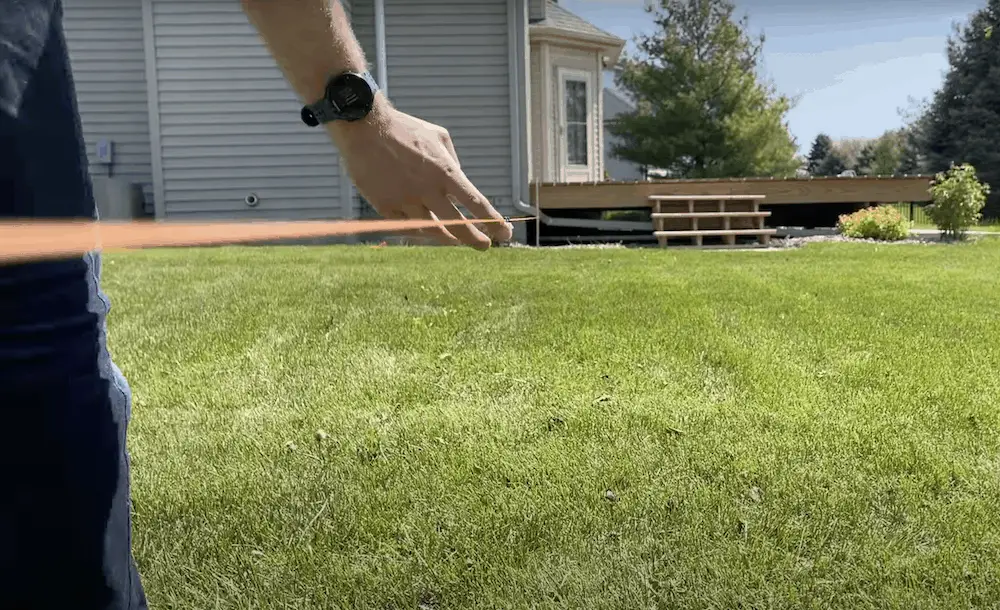Whether you’re doing a landscaping or drainage project, your yard’s grade – also known as the slope – is an important factor for you to consider. For example, I needed to find the grade of my yard to ensure the corrugated water line would have a proper slope for water to flow away from the house.
Another reason why you might want to find out the grade of your house is to see if the land around your property is completely flat or if it slopes towards your house. If so, you may want to try regrading your yard so you don’t end up with flooding and erosion issues down the line.
Plenty of tech tools are available to find your yard’s grade, but they’re generally on the expensive side with hefty instructions manuals. On the other hand, if you’re doing smaller projects or just want to get an idea of your yard’s grade – you can follow the below DIY instructions.
Prefer to watch the video on this project instead? See below!
Overall time: 30 minutes
Difficulty level: Easy
Yard Grading – Tools Required:
- Stakes (you can make them yourself with some 2” x 2” wood. Just be sure to cut a point at the end to help them sink in the ground)
- String
- Line Bubbe Level
- Stanley Tape Measure
- 2-Pound Sledge Hammer
DISCLAIMER: This blog contains affiliate links, which means that if you click on one of the product links, I’ll receive a small commission.
How to Find Your Yard’s Grade (DIY) – 7 Simple Steps

- Sink the first stake near your home’s foundation with your hammer. The stakes should be deep enough that you can pull on the string and they won’t pull out.
- Eyeball a straight line away from your house and sink the other stake in the ground. I put my second stake 36 feet away from the house. But this number will change depending on your property and project.
- Go back to the stake near the house and do a cow hitch knot around the stake (watch minute 2:10 in the video**) Tip: if it’s a new string, try rubbing dirt on it to get the shiny coating off – that will help the knot hold.
- While keeping tension on the line, walk to the second stake further from the house and secure the line bubble level between the two stakes.
- Around your second stake, use a binding knot (3:18 in the video**), which I learned from the Essential Craftsman. After you finish the knot, dangle the loose end over the line.
- At this point, adjust the string up or down on your second stake so that it’s level and there is no sag. Bring the line leveler to the center – and you should get the same reading.
- Get your tape measurer to figure out the distance between the line and the ground on both stakes. The difference between these numbers will tell you the elevation between the two stakes.
A real-world example of using yard grading for a landscaping project

For my property, at the first stake, I measured 15” to the ground and the line, and then I took another reading at the other end, which was just shy of 28”. So that gave me at least 12” of elevation change between the two stakes. This was plenty of space for the slope that I needed for the drainage pipe.
Curious to see how the rest of my project went with burying a corrugated pipe to divert water away from the foundation? Check out this video.




